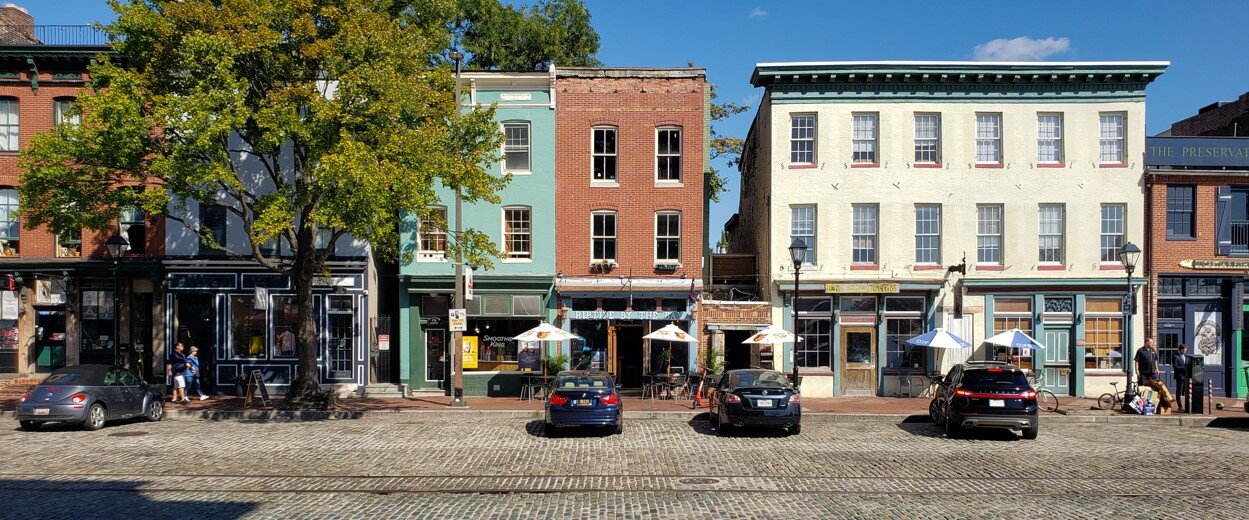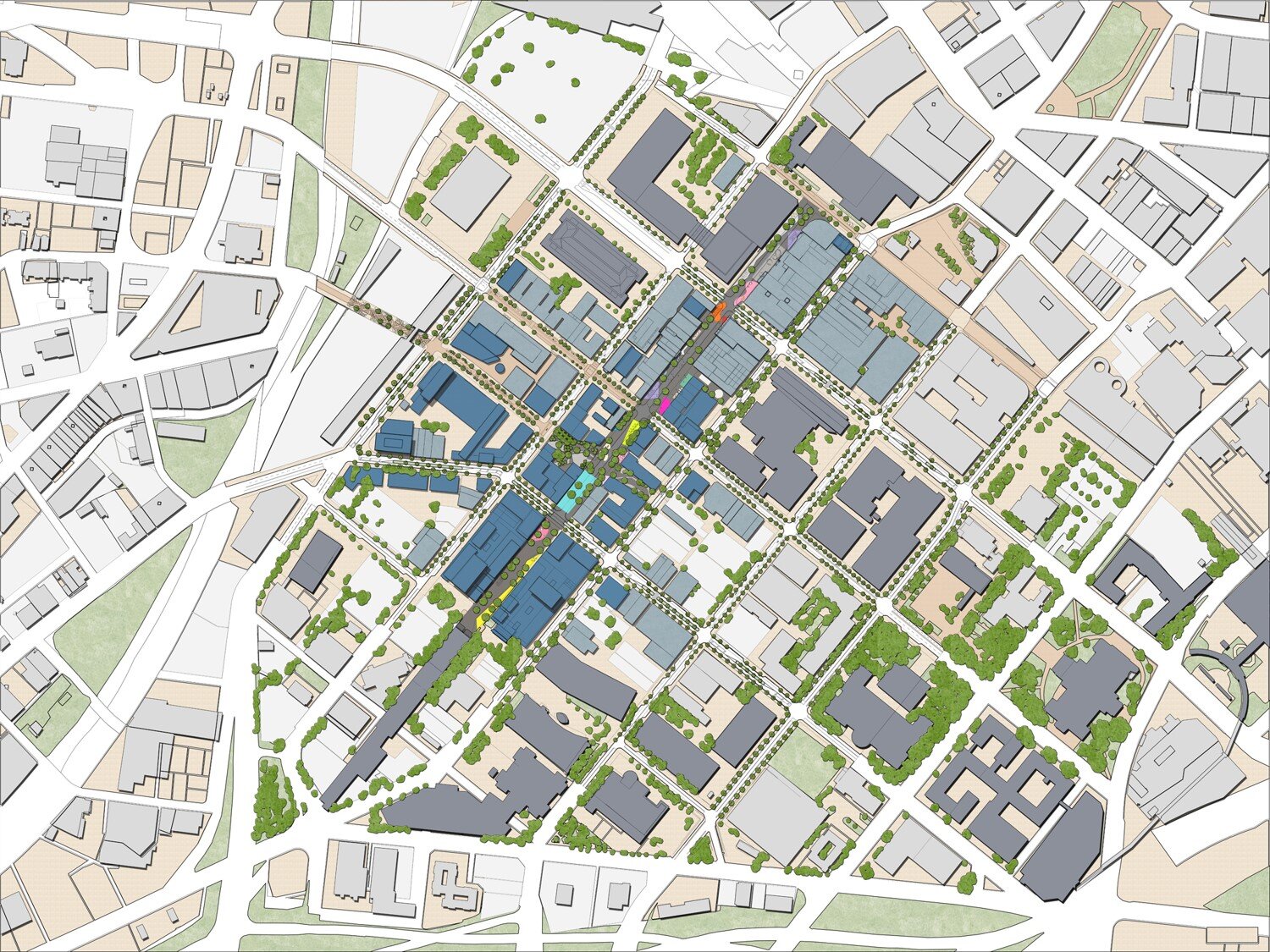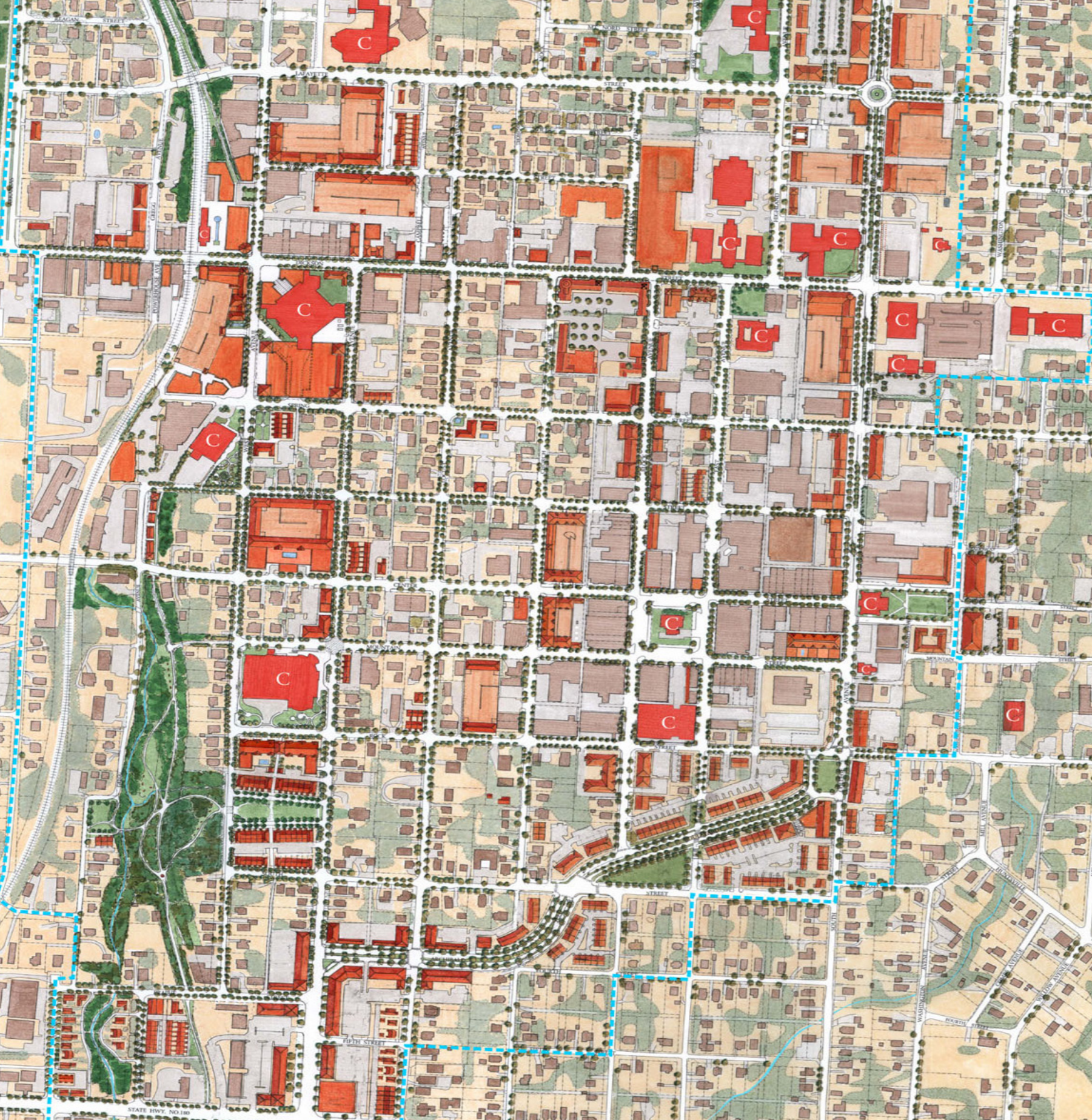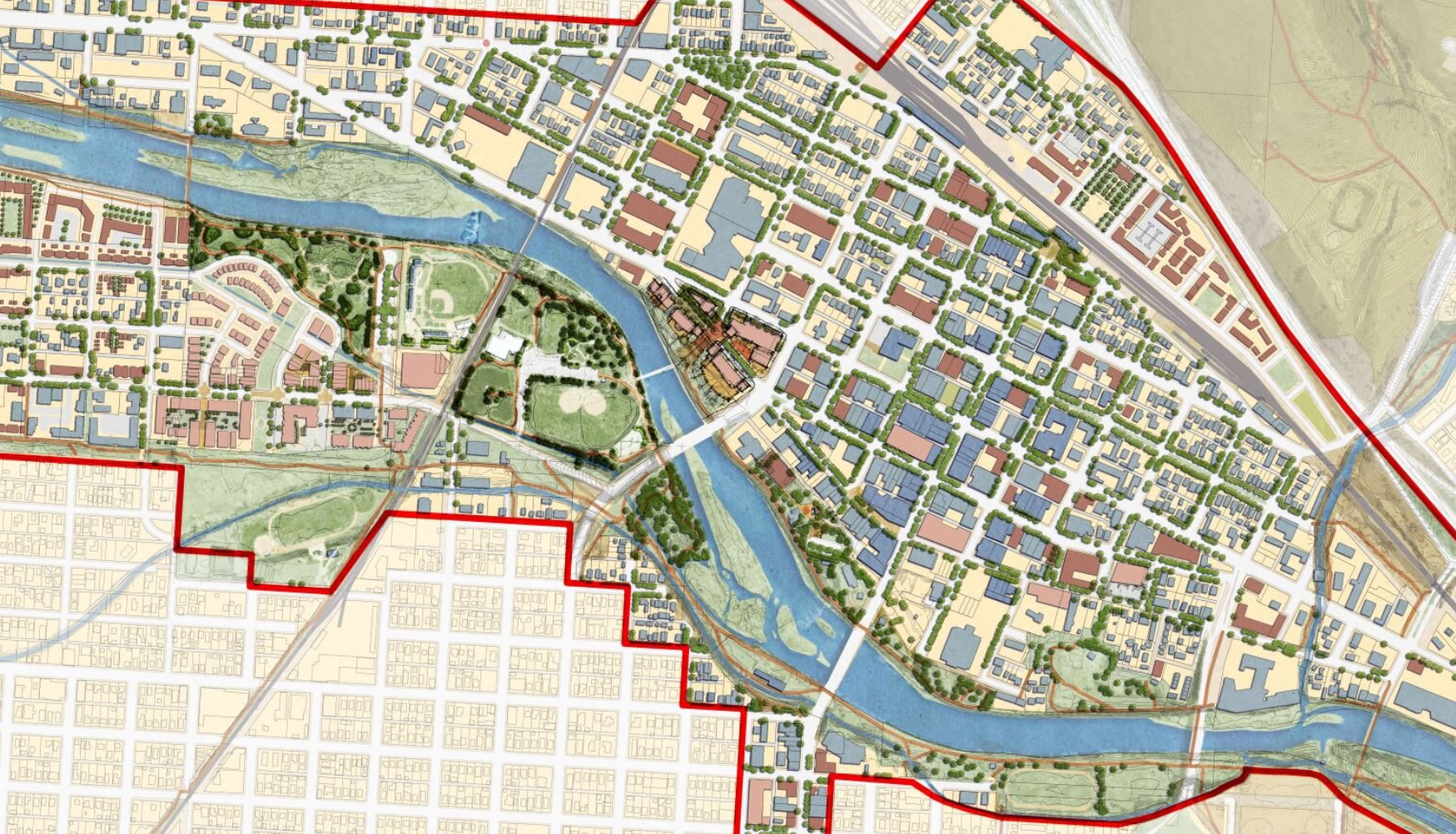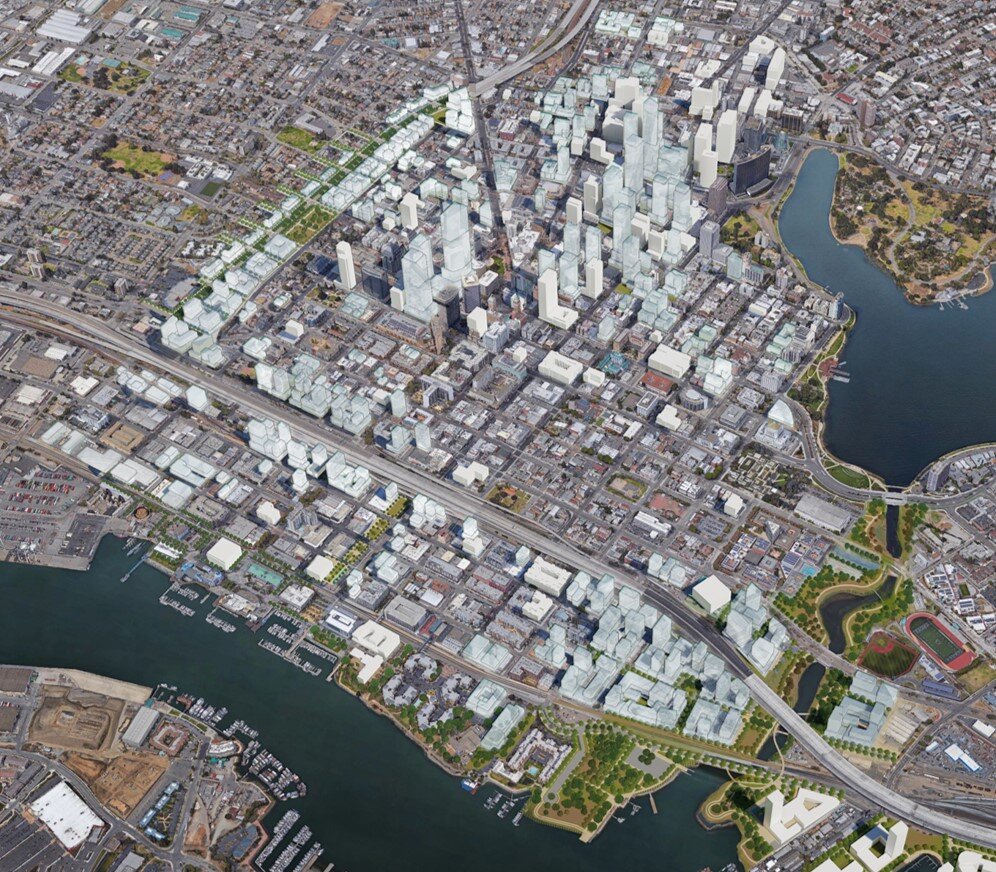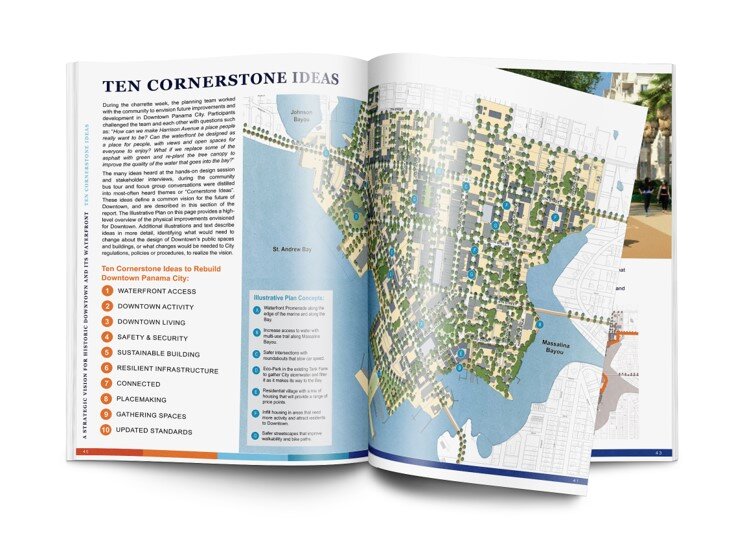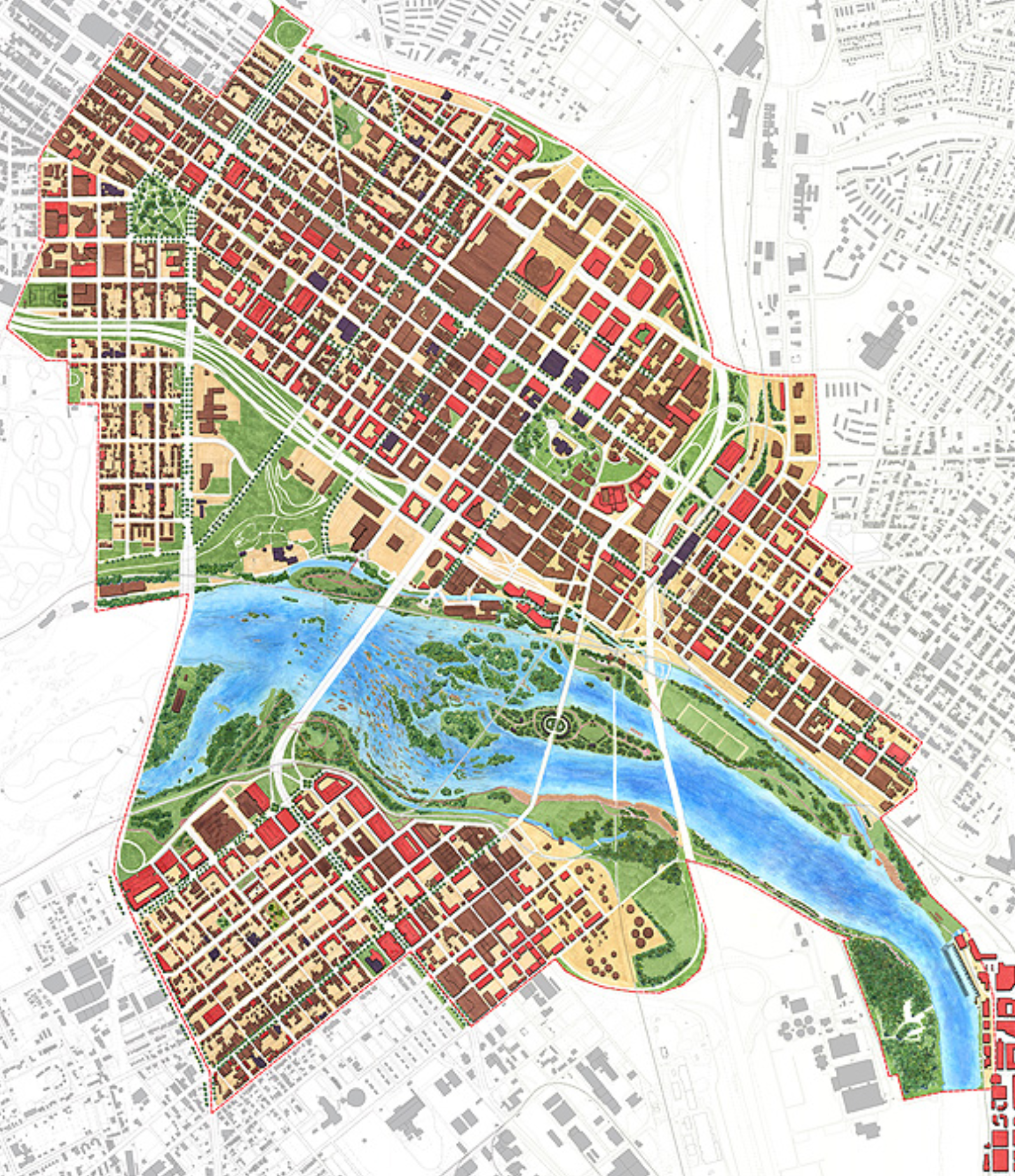Transit-oriented development concept for BRT corridor, Chapel Hill, NC. Dover, Kohl & Partners & AECOM, 2018.
As planners we tend to toss the around the relatively novel term “transit-oriented development.” There are clear advantages to having more souls around within walking distance of the public transit stop and local-serving commerce, all brought together in a compact, mixed-use, walkable package of architecture, street design, and public spaces. To get all that to happen, your city has to plan for it.
Sometimes there’s a debate about which comes first, the transit improvements or the transit-supportive growth. (“Transit-ready” and “transit-worthy” development come up, among the terms we rely on to explain why some corridors could be made more competitive in the hunt for infrastructure dollars, if they grow pre-established, ridership-inducing jobs and housing and other destinations).
But stop to think about this: Before the sprawl experiment— before American cities started orienting everything around single-occupant car trips— virtually all urban development was transit-oriented development. Back then we called it by much friendlier names, like “towns” and “neighborhoods” (so, given the choice, I still do). The heart of any given community coalesced around its stagecoach stop, its ferry landing, its train station, or its streetcar stop, in a natural process borne from convenience and value creation. It’s a proven, repeatable formula.
We can do the same thing today around modern investments in high-quality public transportation, including relatively economical bus rapid transit (BRT) corridors. The real estate development that underpins your town’s tax base depends on predictability; uncertainty is the enemy of investment. A firm upfront commitment to high-quality transit that dependably attracts riders will reduce the risk to investors. What will make riders choose transit over driving everywhere? Frequent, low-cost, reliable service? Yes. A visit-worthy neighborhood that’s easy to move around in on foot, once you’ve left the vehicle? Yes, and there are myriad other variables. But if we are going to do this with rubber-tire vehicles that share the streets with All Those Cars, one of the best things we can do is give the transit vehicles their own lane. The incentive to ride transit goes way up if your bus isn’t stuck in the same traffic you’d be in if you drove. The message with bus-only lanes is clear: If you don’t like sitting in congestion, get out of your car and ride the BRT.
Traumatized by the drop in ridership during the COVID-19 crisis, transit systems remain essential and will need every advantage to get back on their feet. Once vaccines allow for building up transit systems again, we will need to work fast to stabilize and grow them. We ought to feed them by growing neighborhoods that work, compete, and thrive in synergy with transit. It’s one reason that the land use policies and regulations that support compact, complete, connected communities are now more crucial than ever. —Victor




